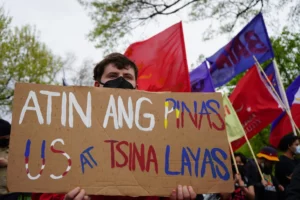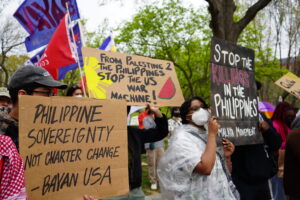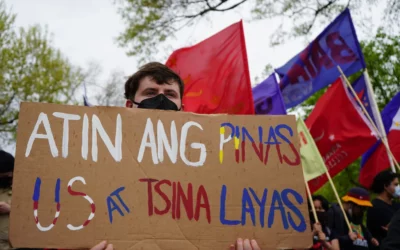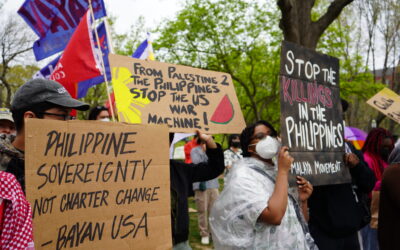The lower unemployment rate appears favorable but should not be taken at face value. The number of employed Filipinos has fallen from a year ago, with the biggest job losses in the critical manufacturing sector. Reported lower unemployment is illusory and it is more likely that discouraged jobless Filipinos are just being dropped from the labor force count.
Between November 2022 and November 2023, the number of employed fell by 70,000 to 49.64 million. This is despite the number of working age Filipinos or population 15 years old and above growing by 1.2 million to 78.1 million from 76.9 million. With no additional work to be found, the labor force shrank by 413,000 and those classified as not in the labor force bloated by a huge 1.6 million.
Even if the drop is considered statistically insignificant, employment has at the very least stagnated in the past year despite hyped economic growth. This may indicate the economy is already returning to jobless growth after post-pandemic reopening.
Taken altogether, these figures indicate a huge number of discouraged jobless Filipinos hidden from reported unemployment. Those unable to find work and who have dropped out of the labor force likely make up a big part of the 1.6 million newly not in the labor force. They join millions of other discouraged workers already uncounted by official figures. Before the pandemic lockdowns disrupted labor markets, IBON estimated at least 2.3 million jobless Filipinos missing from the unemployment figures.
Another major concern is the big drop in manufacturing jobs which indicates a fundamental weakening of the economy’s capacity to create jobs. The manufacturing sector lost a huge 1.4 million or almost a third of its workforce since last year, dropping from 4.3 million to just 2.9 million in November 2023.
This could be due to reduced production in the sector associated with weaker, especially global, demand. According to data from the Philippine Statistics Authority, manufacturing growth slowed in production volume from 6.4% in November 2022 to 1.9% in November 2023. This was due to significant contractions in several subsectors such as the manufacture of machinery and equipment except electrical (by -27% from 63.7% last year); of computer, electronic and optical products (by -17.7% from 26%); of wood, bamboo, cane, rattan articles, and related products (by -20.2% from 5.8%); of beverages (by -11.6% from 8.9%); and of food products (by -5.0-% from 7.7%); among others.
The quality of work still remains poor with some 70-80% of employed Filipinos in informal and low-paying work. Some 21.3 million or over four out of ten jobs (43%) in November were in visibly informal work – the euphemistically self-employed (14.2 million), those in family farms or businesses (5.1 million, of whom a huge four million are actually “unpaid”), and household help (2.1 million). IBON also estimates another 16-18 million who are wage and salary workers but in informal private establishments in likely irregular work arrangements.
The millions of unemployed Filipinos and their families deserve a government that is candid about the actual extent of joblessness and the jobs crisis – this a necessary step to real and meaningful policy action.
A fundamentally different approach is needed that includes much more government support for agriculture and, especially, national industrialization policy to create enough work for Filipinos. The continuing decline in manufacturing employment should be fixed by building indigenous Filipino industry and not by relying on footloose foreign manufacturing investment.

![The lower unemployment rate appears favorable but should not be taken at face value. The number of employed Filipinos has fallen from a year ago, with the biggest job losses in the critical manufacturing sector. Reported lower unemployment is illusory and it is more likely that discouraged jobless Filipinos are just being dropped from the […]](https://www.altermidya.net/wp-content/uploads/2024/01/24-0109-Image-NA-Nov-2023-LFS.jpg)








0 Comments